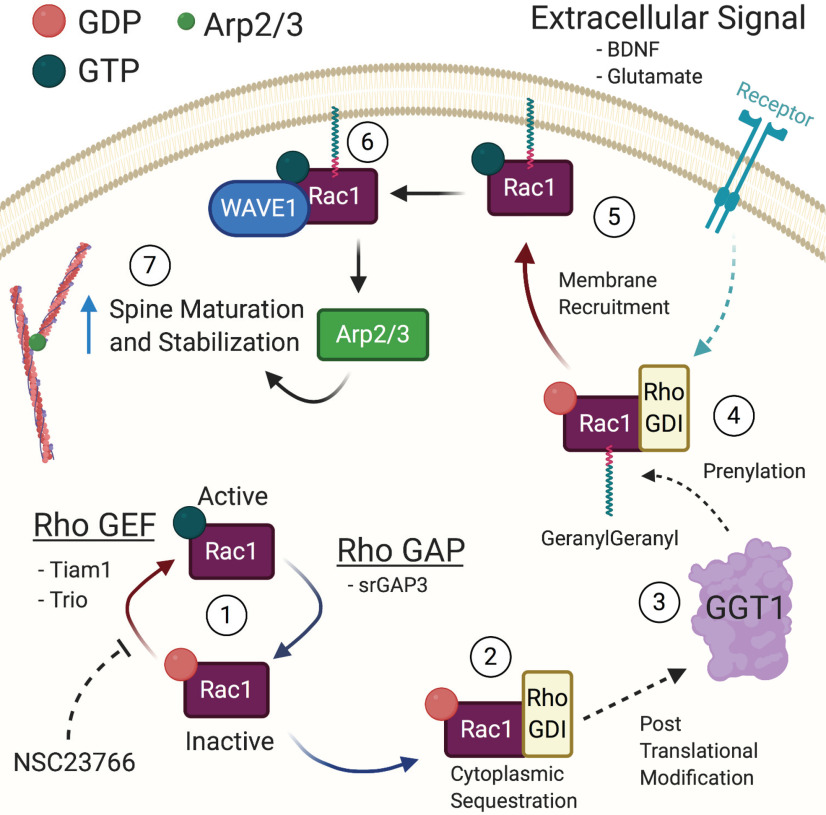Figure 3.
Rac1 signaling cycle in dendritic spines. The spatial and temporal activity of Rac1 is tightly controlled through a network of signaling interactions and post-translational modifications. (1) The primary regulators of Rac1 are the GEFs, which activate Rac1 by exchanging GDP for GTP, and the GAPs, which inactivate Rac1 by accelerating the hydrolysis of GTP. The compound NSC23766 specifically inhibits Rac1 activity by blocking the GEFs Tiam1 and Trio. (2) In its inactive state, Rho GDIs act to sequester Rac1 in the nucleus and protect it from proteolytic degradation. (3) The enzyme GeranylGeranyl Transferase 1 (GGT1) post-translationally modifies Rac1 through the addition of a geranylgeranyl lipid group. (4) Following prenylation, Rac1 is ready to be activated. (5) Upon activation of an upstream effector, such as receptor tyrosine kinase or mGluRs, the prenylated Rac1 loses the Rho GDI and has GDP exchanged for GTP, resulting in activation. (6) Activated Rac1 then binds to WAVE1 at the membrane and causes activation of Arp2/3, which can then bind to already established F-actin. (7) Binding of Arp2/3 increases the number of branched actin filaments and drives the dendritic spine into a more stable configuration. Rho GEF, Rho guanine nucleotide exchange factor; Rho GAP, Rho GTPase activating protein; Rho GDI, Rho guanine nucleotide dissociation inhibitor.

